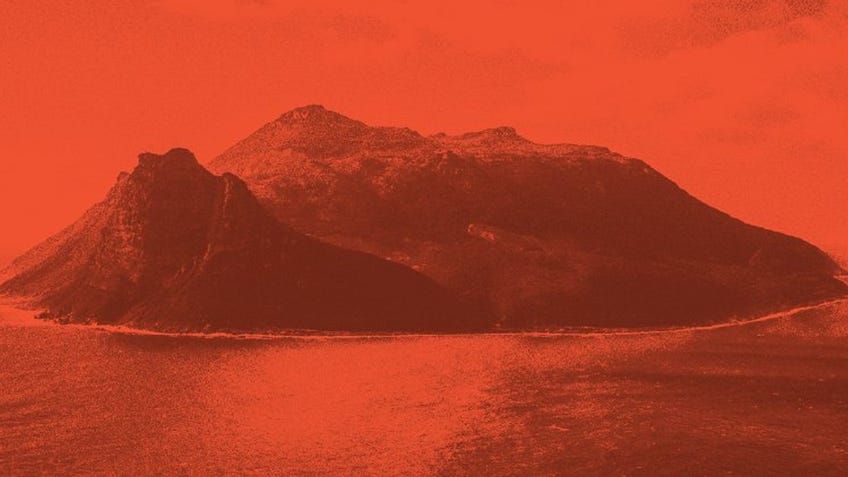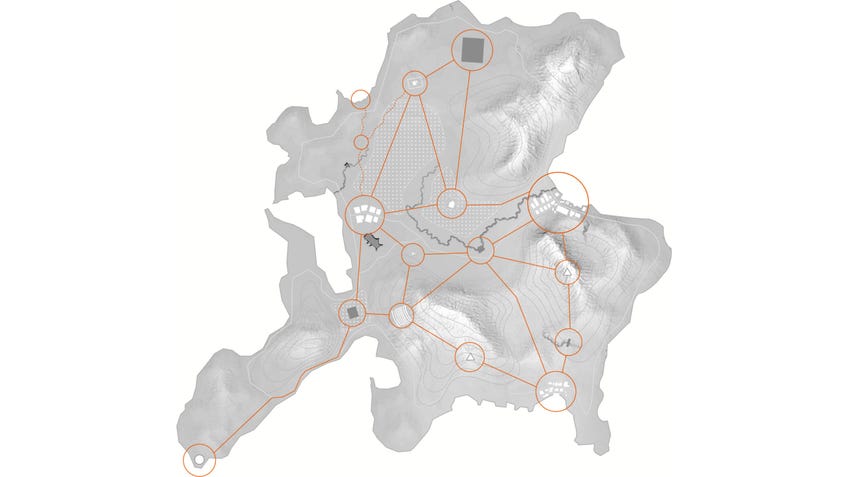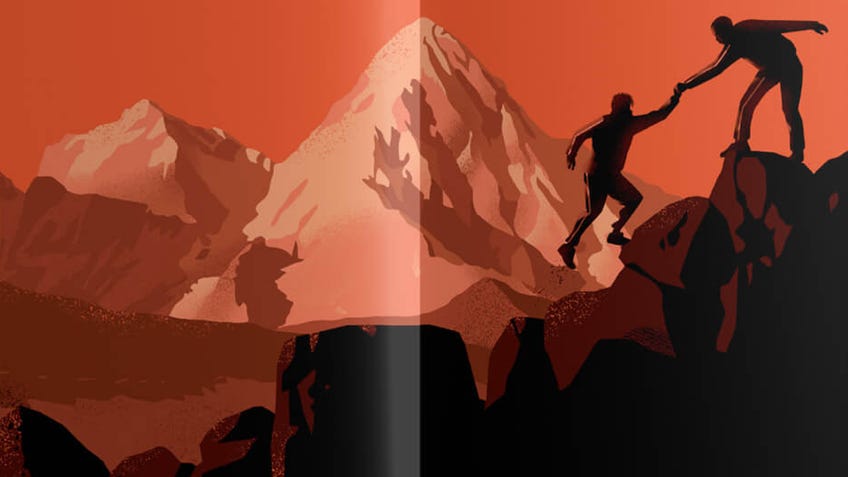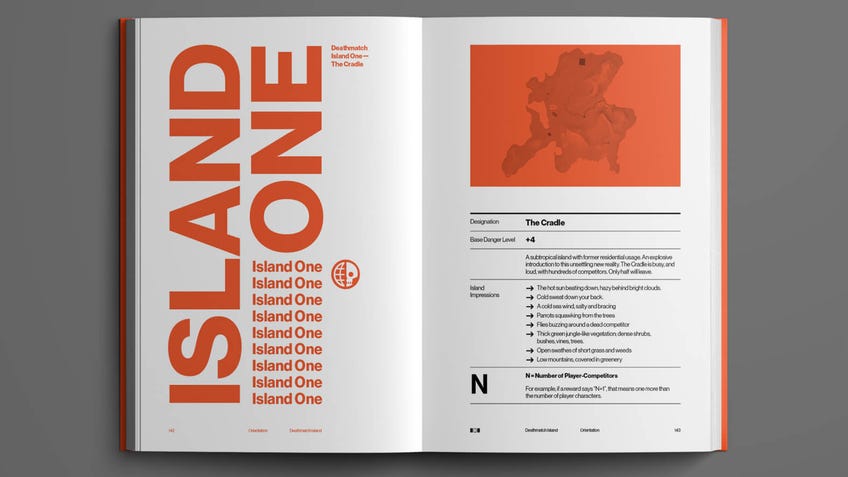“I wanted players to say ‘screw you’ and break the game”: Deathmatch Island creator on bringing something fresh to battle royales - and why Fortnite can’t match a TRPG
“Friendly competition is so common to other games we play - board games, video games, sports - but it’s kind of taboo in tabletop RPGs.”
From Squid Game to Fortnite, battle royale stories and games are a common sight today, pitting TV shows, movies and video games against each other in a desperate fight to be the last one standing.
While the genre has rarely extended over onto the tabletop, some board games have taken a shot at bringing the enduringly popular idea of every person for themselves into cardboard. Rarer still are tabletop RPGs that have attempted to capture the scrappy fight for survival in an ever-shrinking arena and the uneasy trust between competitors as they work their way toward single-digit survivors - knowing that there may be only one who can take the ultimate crown (or chicken dinner, if you prefer).
Deathmatch Island plans to change that. Emerging from designer Tim Denee’s love of battle royale tales and firsthand experience of corporate dystopia - adding the nightmarish feel of TV series Severance and video game Control into the battle royale action of Fortnite, PUBG and Hunger Games - the tabletop RPG pits players against both other contestants and potentially each other in a gruelling test of endurance.

Behind Denee’s delve into brutal competition, interpersonal drama and rebellious action is gameplay adapted from the Paragon system ruleset of Agon, John Harper and Sean Nittner’s Greek epic-inspired RPG of competing mythical heroes. The game divides sessions into phrases that see players exploring the island itself, before fighting for their lives and possibly finding a way to try and escape the deadly system in which they’re trapped.
Ahead of Deathmatch Island’s Backerkit campaign on October 17th, I spoke to Denee about building on the familiar tropes of the battle royale genre, breaking tabletop RPG taboo by turning players against each other - and how Deathmatch Island plans to pull off an experience that video games simply can’t top.
What are the origins of Deathmatch Island - how long have you been working on it? Did it emerge from any particular experiences or inspirations?
Deathmatch Island has been in development for about two years, from first idea through to crowdfunding. I’ve long been a fan of the battle royale genre and have wanted to do something in that space. It was playing a campaign of Agon that made me realise that particular system would be a good fit, and Deathmatch Island took shape from there.
Where it really solidified was the visual design; the first two things I created, beyond scribbled notes, were the logo and then the character sheet. Graphic design was and remains absolutely core to the experience of this game. I’ve been working in design for corporate clients for almost 20 years now, and being able to weaponise those skills and experiences to create this game was so cathartic.
How did it evolve over the course of its development?
As the title might suggest, this game started off very focused on the deathmatchness of it all. It had a high lethality, everything was randomly generated - including NPC competitors - and gameplay was entirely within the bounds of the fictional competition.
That was a good place to start, but it was feeling flat at the table. I revisited the touchstones, and I realised that what was missing was the ability to step behind the curtain, to say “screw you” and try to break the game. That meant there had to be something behind the curtain for the players to find, and that meant developing the weird side of Deathmatch Island - the Lost, Severance, Control, “mystery box” side of the game.
That duality of Deathmatch Island, as embodied in the two-sided logo, really unlocked the whole game. It’s pulse-pounding deathmatch action on one side, and very weird corporate horror on the other.

Deathmatch Island is built on the Paragon system. Was this always the case? How did you adapt the framework to suit the game and its setting?
Yes, this game was inspired by playing a campaign of Agon and having a great time with it. One of the things I really enjoy about Agon is the friendly competition between the players. You’re all ancient Greek heroes; you want to be the best in all the contests and earn the most glory. There was one character, Lykos the kind-hearted satyr, who just had incredibly tinny luck throughout and somehow managed to be the best in almost every contest. Competing with them was infuriating in the best way.
That meant there had to be something behind the curtain for the players to find.
This kind of friendly competition is so common to other games we play - board games, video games, sports - but it’s kind of taboo in tabletop RPGs. I wanted to make a Paragon game that further developed and explored this, and Deathmatch Island is the result. It has the friendly competition from Agon, although you compete for “followers” instead of glory, and further intensifies that with the possibility of a straight PVP shoot-out at the end. Or maybe you’ll just not do that, and break the game together. Funnily enough, that kind of friendly rivalry can also lead to strong solidarity.
Beyond that, Agon’s pathos becomes physical injuries, and divine favour becomes “acquisitions” - weapons and equipment. You start with no acquisitions, which as any Agon player will tell you is pretty rough. So your first priority is finding them on the island…

Battle royale settings are a familiar sight today, from Fortnite and PUBG to Squid Game and Hunger Games. Why is the genre the right fit for a tabletop RPG?
Something I’ve always loved about battle royale movies and TV shows is the part where the protagonist goes through the “staff only” door and starts pushing buttons they’re not meant to. When the kids in Battle Royale fight back against the system. That’s something that’s really missing from battle royale video games; sadly your Fortnite characters can’t blow up an exit out of the level so they can take a service corridor to the server room and turn off the game. But that’s exactly what a tabletop RPG is perfectly suited for.
The other thing that really makes battle royale media sing is when it explores the interiority of the protagonists, their backgrounds and their motivations. Who were they before they came into the game, and how does the game change them? What will they do in the end, when the chips are down? Like a good zombie movie, a good battle royale movie is really about the humans at the heart of it and what they’re capable of under pressure. And again, a tabletop roleplaying game is such a good vehicle for exploring backstories and motivations and interiority.
This is a game that wants to know who your character is, and why they’re like that, and whether they can change - for better or worse. Because your character starts with a kind of amnesia, we learn the answers to these questions at the same as the character does, gradually over the course of the game, through flashbacks to their life before Deathmatch Island.

What were the biggest challenges in adapting a battle royale format to a tabletop RPG?
Easily the biggest challenge was how to represent hundreds of NPCs - all the other competitors - in a satisfying and coherent way. In the earliest versions of the game I actually designed tables and sheets for the GM to create and track every single competitor on the island, but this was absurd and unwieldy.
The solution is what the game calls “Casts”, which are rosters of pre-written competitor factions that the GM can choose from for their season. Each is written to explore certain themes and to have interesting dynamics between the key characters. So instead of the GM having to keep track of every single NPC, they just track the relative status of a few key factions, and they only portray the key characters from within those factions.
Something I’ve always loved about battle royale movies and TV shows is the part where the protagonist goes through the “staff only” door and starts pushing buttons they’re not meant to.
What does the game bring that’s new to the genre?
The biggest innovation is this procedure called “Theory Crafting”. Every island is a point-crawl, right, and it has about 15 possible locations to visit. In a single season - a playthrough of all three islands - you’ll visit maybe four to six of these locations on each island. A small fraction.
Some of these locations give clues as to what Deathmatch Island may be about, what the “purpose” of it is - anything from government conspiracy to reality television to scientific experiments to truly out-there metaphysical weirdness.

In-between islands, you all share theories about what the conspiracy behind the game might be, what the truth of it is, based on things you’ve seen so far. You then assign points to each category.
Because you go to different locations every time you play, and you all notice different details, you can get a really wide range of theories. And then it’s up to the GM to keep track of these theory-points and to react to them with further events during play, driven by the theories so far, which creates a loop feeding into the next round of theory crafting.
In practice it feels like you’re all discovering the truth together, converging on a single answer, but it leads to wildly different outcomes every time.
The battle royale genre is commentary on modern society. The zero-sum competition that is our lives.
How does the game weave its commentary on dystopian society into the action of surviving the island itself?
This is where my experience of working in corporate design really comes into play. It’s everything I love to hate about corporate comms. Everything is about generating content, everything is about gaining followers, and Deathmatch Island only wants to help you succeed. DMI is a corporation with a mission statement, employee induction onboarding, and that cares about the wellbeing of its staff.
I think that’s only logical, really. The battle royale genre is commentary on modern society, right? The zero-sum competition that is our lives, etc. So of course this battle royale corporation also wants you to hustle and grind and be your best self.
Given the fairly fixed format of battle royales - fight until one person is left - can Deathmatch Island support longer-form campaigns? Or is it largely designed for shorter sessions?
The basic experience is a “season”, which is three islands - although you can compress this to a one-shot. Where it gets interesting is playing multiple seasons; this can be with new competitors each time, or with returning competitors. Sometimes competitors will win the game and survive to come back a second time; or maybe they break the game at the end and manage to escape alive.
Because of the theory crafting procedure, playing each further season delves deeper into an ever-more convoluted conspiracy at the heart of your version of Deathmatch Island. And because of the point-crawl maps, it will take several seasons before you see all the locations.
The regular seasons are where the Deathmatch Island corporation fucks around, and New Game+ is where the corporation finds out.
Building on that, if you’ve completed at least one season you can start a new season in New Game+ mode. This is where you start with all the REDACTED acquisitions left behind by previous competitors, as well as knowledge of any secret classified maps and hidden tunnels they’ve discovered. In New Game+ you start with no amnesia, and you’re here to blow the whole game up. Essentially the regular seasons are where the Deathmatch Island corporation fucks around, and New Game+ is where the corporation finds out.
What are your future ambitions for the RPG and its setting?
The core concept is very easy to extend, and we’ve already got some new casts of competitors and new islands waiting to be finished.
I’m particularly excited about new islands that explore certain theories behind the game; so an island that’s really focused on the game as secret military training programme, or an island that explores the idea that this is all actually an alien experiment in space. Depending on how your theory crafting goes on Island One, you could then drop the players into one of these new islands and go hard with it.


